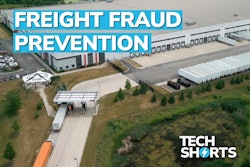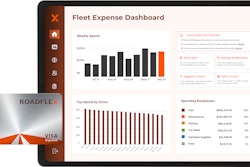Imagine for a moment that you have a high value shipment, say, a load of electronics, in transit. You know when the shipment was picked up and when it is supposed to be delivered, but what you don’t know is exactly where your shipment is right now and what condition it is in. Until quite recently, this was the case with every truckload that crisscrossed the U.S. Today, with the rise of the Internet of Things (IoT) technology, shippers, carriers, and logistics service providers can pinpoint the exact location of a given shipment at any time, and even inspect details as to its condition, expected arrival time, and more. Since its adoption in the late 2000s and early 2010s, IoT has revolutionized the trucking industry, and promises further advancements- and some new risks- in the future.
Real-time tracking and security enhancements
IoT technology connects physical objects, such as trucks, trailers, and cargo to the internet through a variety of devices and sensors. These devices can collect and transmit data in real-time, which can then be analyzed to monitor a shipment’s ETA and conditions, improve operational efficiency, and optimize the supply chain. GPS trackers and telematics devices can track the location of a shipment in real-time, providing enhanced fleet visibility, route planning and enhancing cargo security. These devices can also be used to create geofences, or virtual boundaries, around specific location and routes that automatically notify logistics personnel when a vehicle enters or leaves the geofenced area. This can be particularly useful to alert dock staff of the impending arrival of a shipment, or to warn when a vehicle is straying off course in a manner which may be indicative of attempted cargo theft.
Optimizing routes and fleet management
The data collected from GPS and telematic devices can also be used for route optimization, analyzing the impact of traffic conditions, construction, road closures, weather, and other factors to optimize routes. Route optimization minimizes delivery times and reduces fuel consumption, which lowers transportation costs and supports sustainability efforts, and reduces the strain on drivers and equipment.
Telematic devices can quantify the condition of vehicles and vehicle components such as brakes and engine performance in real-time, empowering fleet managers with data that can be leveraged for preventive maintenance. Proactively addressing mechanical issues before they render vehicles and equipment inoperable minimizes repair costs and maximizes fleet uptime.
Driver monitoring and privacy concerns
Since the ELD mandate was implemented in 2015, there has been pushback from some drivers who feel these devices limit their flexibility and have failed to deliver on the promise of increased road safety. Today’s IoT devices have rekindled this discussion, as devices increasingly can be used to monitor driver performance and behavior via in-cab cameras. It’s probably only a matter of time before new passenger vehicle technology that monitors drivers’ stress levels, heart rate, and breathing is introduced in the trucking industry. The dynamic between the demand for data, safety, and visibility and the desire for drivers to maintain their autonomy and privacy is likely to intensify as these technologies proliferate.
Cargo condition monitoring
IoT devices can be used to monitor the condition of cargo, including temperature, humidity, and security. Fragile cargo can be monitored for bumps and hard shocks in transit that could cause damage. This data can be transmitted to cargo insurance companies to help fine-tune risk assessments and cargo insurance pricing. The devices also create an incident log that can serve as evidence of the circumstances surrounding a claim.
Perishable goods, ranging from fruits and vegetables to pharmaceuticals, can be monitored to ensure that proper temperatures and humidity are being maintained to protect the integrity of the products. IoT security devices can detect shocks and vibrations that may be indicative of an attempt to break into a trailer or shipping container. Light sensors can detect if a trailer or shipping container has been opened while in transit. Any deviation from established baselines can trigger automatic notifications to fleet managers, logistics service providers or law enforcement and security personnel.
With these new technologies also come new risks, particularly those related to cybersecurity. Malware, ransomware, Distributed Denial of Service (DDoS) attacks, phishing scams and data breaches have increased in recent years in the logistics and supply chain industry. High-profile cyberattacks against Estes Express, Expeditors International, and Hapag-Lloyd are just the tip of the iceberg.
According to the 2023 X-Force Threat Intelligence Index by IBM, transportation is among the top 10 industries targeted by cybercriminals, with nearly 4% of all attacks targeting transportation companies. Mitigating these risks will require trucking companies to invest in comprehensive security measures, including ongoing employee training, frequent security audits, encryption, intrusion detection software and security monitoring.
The future of IoT in trucking
What does the future hold? By combining IoT with other technologies, such as AI, machine learning, and predictive and prescriptive analytics, the potential for innovation is boundless. Continuing advancements in IoT will lead to increasingly sophisticated sensors, increasing safety and enabling trucking companies to anticipate and prevent mechanical failures with a greater degree of accuracy.
Digital matching of shipments with available trucks based on real-time location and equipment type data will further optimize the supply chains and fleet management. IoT tech, when combined with AI and robotics, may even usher in the long-promised era of truly autonomous trucks.
The continued rise in IoT connected devices further highlights the need for platforms that can integrate disparate systems, including sensors, vehicles and TMS and ERP platforms. Advanced, tech-enabled logistics service providers offer Integration Platform as a Service (IPaaS) technology to address this challenge. This middleware cleanses, normalizes and aggregates the river of data that IoT devices both produce and rely on to remain functional.
IoT technology has ushered in a new era of efficiency, transparency, and security in the trucking industry, transforming the way shipments are tracked, monitored, and managed. The future of IoT in trucking holds immense promise, with the potential for even greater innovation through the integration of AI, machine learning, and other emerging technologies. As IoT continues to evolve, it will continue to reshape the trucking industry, paving the way for safer, more efficient, and more sustainable transportation solutions in the years to come.












